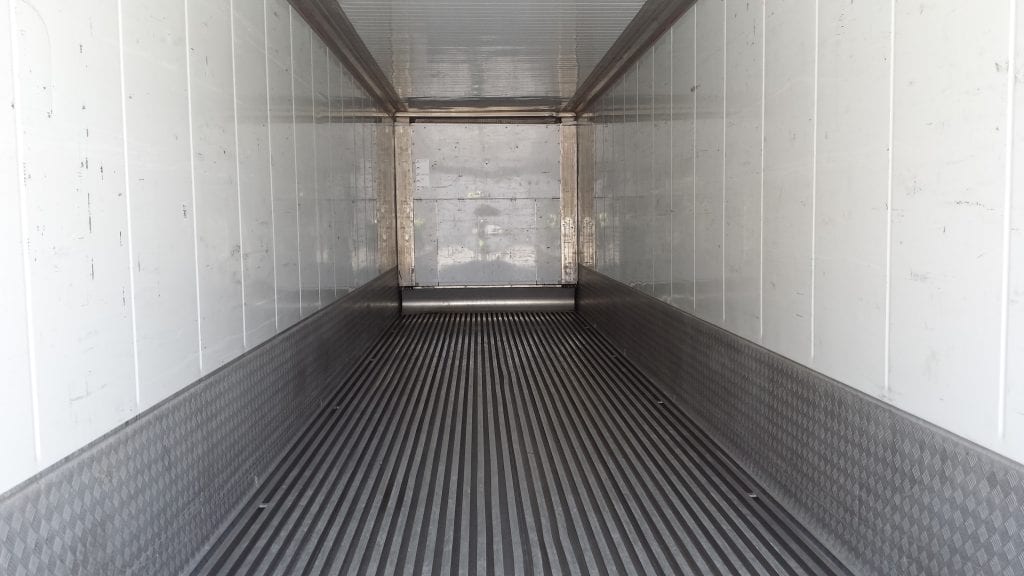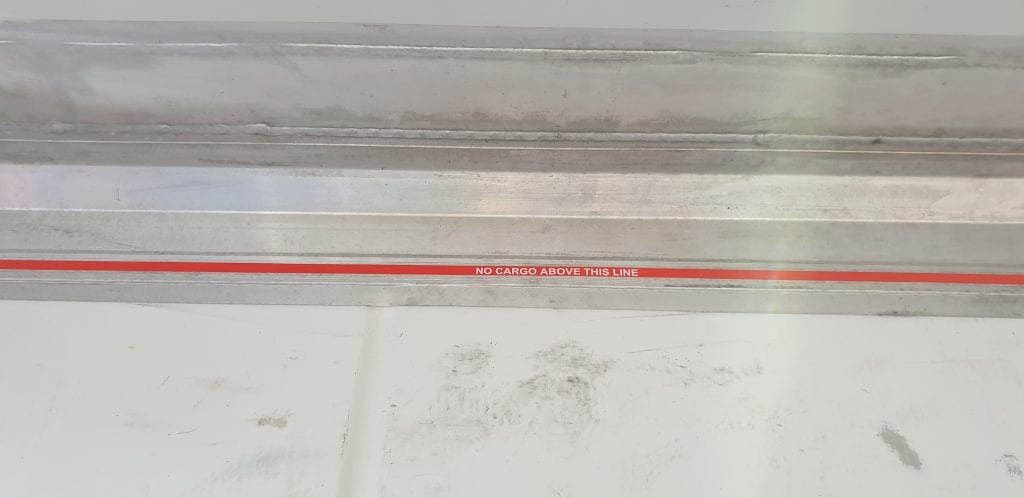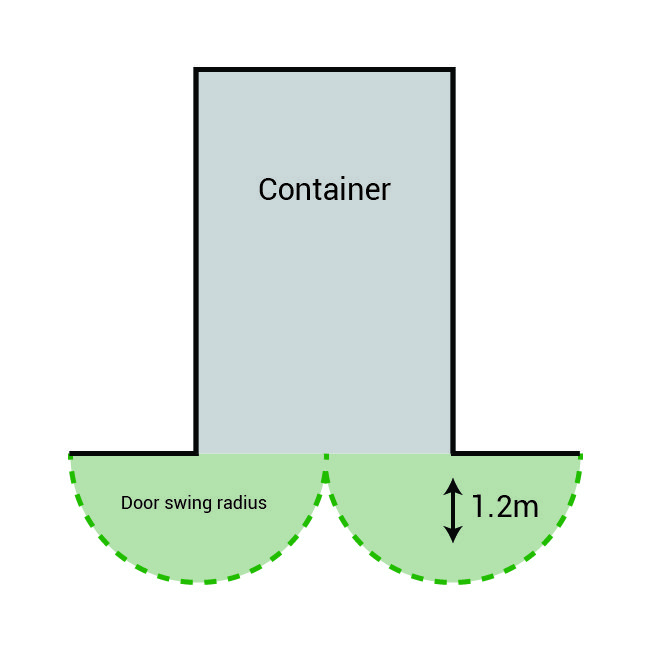When hiring or leasing a refrigerated shipping container, it’s important to determine the right container size for your needs. At Kiwi Box we specialise in 20ft and 40ft models, so let’s take a look at the dimensions of 20ft and 40ft refrigerated shipping containers.
What are the dimensions of a 20ft shipping container?
Our most sought-after size is our 20ft refrigerated shipping container. These units are popular thanks to their single-phase refrigeration units which can be run by a standard domestic power supply.
20ft Shipping Container Dimensions (internal):
Length: 5.4m (5451mm)
Width: 2.2m (2290mm)
Height: 2.2m (2242mm)
Door opening width: 2.2m (2290mm)
Door opening height: 2.2m (2212mm)
What is the volume of a 20ft shipping container?
The 20ft refrigerated shipping containers we lease and sell have an internal volume of 28mᵌ and weigh just under 3000kg when empty.
It’s important to note that the height of their door opening (2212mm) is roughly 30mm lower than the internal ceiling height (2242mm).
Their internal ceiling height (2242mm) is equivalent to well over 7ft, providing plenty of head clearance for users walking in and out of the unit.
What are the dimensions of a 40ft shipping container?
The 40ft refrigerated shipping containers we rent out require a more powerful three-phase power supply and are excellent for keeping large volumes of product at a constant temperature. They offer a large 11.5 x 2.2m floor space.
40ft Shipping Container Dimensions (internal):
Length: 11.5m (11588mm)
Width: 2.2m (2290mm)
Height: 2.5m (2545mm)
Door opening width: 2.2m (2290mm)
Door opening height: 2.5m (2557mm)
What is the volume of a 40ft shipping container?
Clients who lease a 40ft refrigerated shipping container from us will benefit from their usable internal volume of 64.9mᵌ.
The 40ft containers weigh 4675kg when empty, so ideally, they will be placed on reinforced concrete or with bricks or railway sleepers under each corner and halfway along the sides of the container.
It’s a lot easier to ‘double stack’ 40ft containers due to their increased internal height of 2545mm (8’4”).
How is the air circulated in a refrigerated shipping container?
When stacking a refrigerated shipping container, it’s important to leave space around your stock for the cool air to circulate.
The shipping containers we lease around the South Island have two fan motors located behind the back wall panel, inside the unit. These circulate the cold air around your product to keep it at a constant temperature.
They first push the air down through a cooling coil and then into the unit’s grooved T-section floor. This flooring is designed to carry the cool air under your product and towards the front doors. The chilled air is then directed up through the inside of the doors and back along the top of your product, back to the fans where the cycle begins again.

The grooved floor in three-phase refrigerated containers helps chilled air circulate around stored product.
Don’t pack your refrigerated shipping container to the roof
Because this air flow path is essential to keeping your stock at a consistent temperature, it’s important to not stack your product so high that the air can’t circulate above it.
Our containers have a helpful indicator line running along the walls, 100mm down from the ceiling. If you pack your product above this line, you’ll impede the air flow, making it harder for the refrigeration unit to get your stock down to your required temperature (and keep it there), in turn using more power and costing you more money.

Kiwi Box refrigerated containers have an indicator line showing clients how high they can stack their product while
still promoting high cooling efficiency and lower power consumption.
Allowing enough space to open refrigerate container doors
It pays to think carefully about where your shipping container will live on your site. The truck delivering your refrigerated container will need to be able to get close enough to your planned spot, so make sure there is sufficient access.
You’ll also need to leave enough space to open the container doors unimpaired. When the doors of our containers are opened to 90 degrees (at a right angle to the container’s side), they require a clear turning radius of 1.2m (1200mm) from the side of your container, as shown below.

The diagram above shows the door swing radius that must be left clear in order to open shipping container doors.
If in doubt, sound us out!
If you’re unsure about which shipping container size is right for your needs, drop us a line and we can chat through your requirements, answer any questions you may have and steer you in the right direction.
Images:
‘measuring tape’ by Sean MacEntee via CC BY 2.0.

